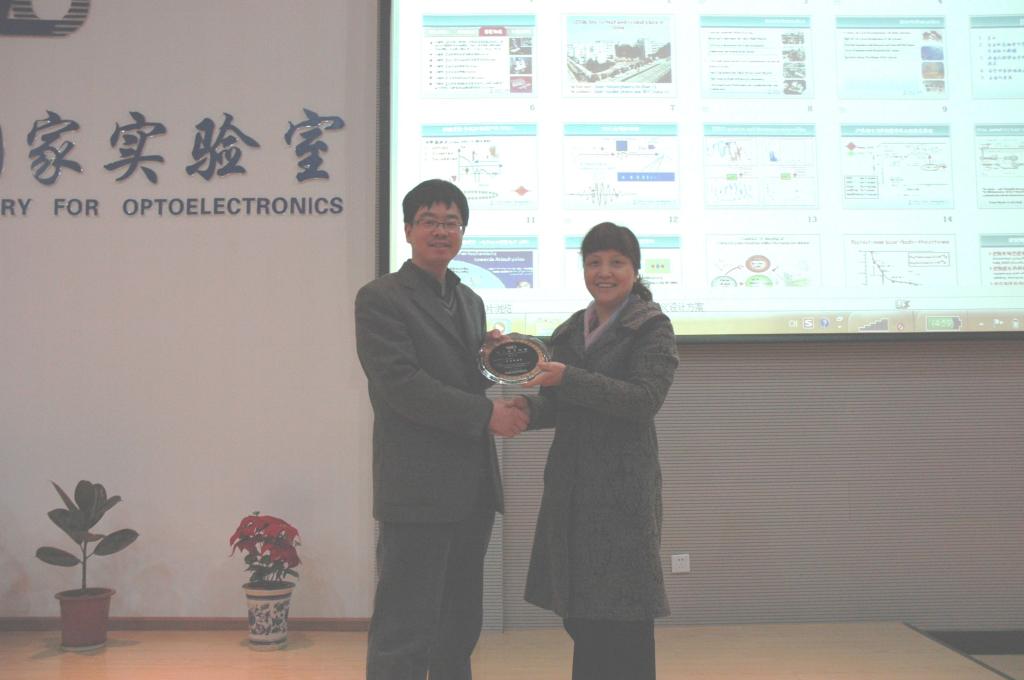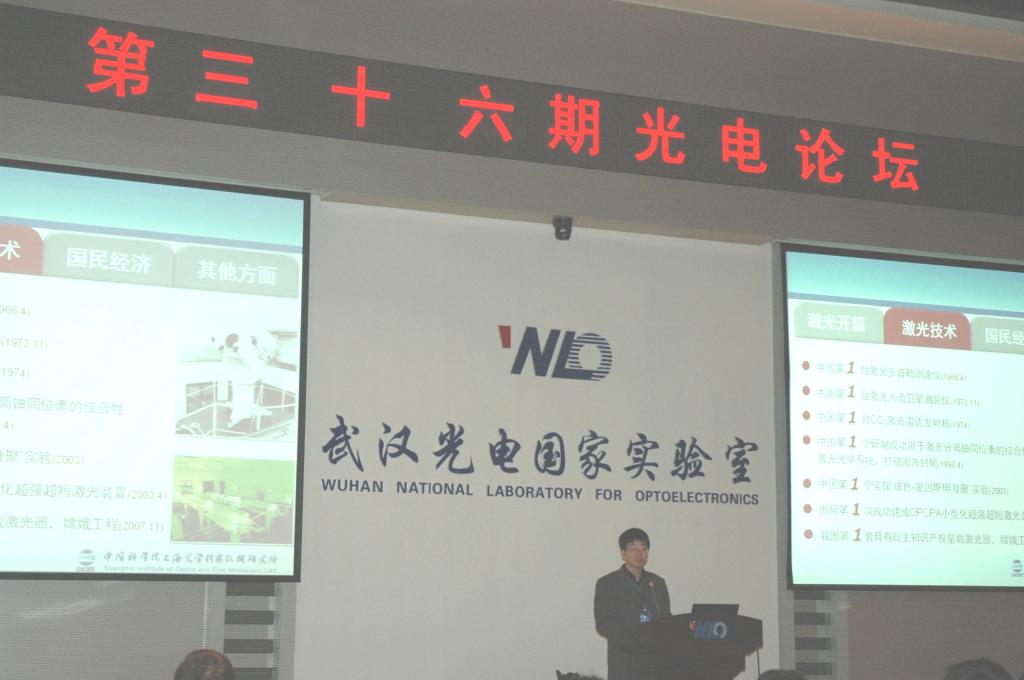Title:Electron acceleration, orbital manipulation and attosecond pulse generation at subatomic time and space scales
Speaker: Prof. Ruxin Li
Time: April.19.2010,14:30-16:00
Venue: Room A101 At WNLO
Abstract:
High-order harmonic generation (HHG) during the interaction of ultrafast high field laser pulse with atoms and molecules is the main approach for attosecond XUV coherent emission. And HHG can be used to investigate the electron acceleration and its trajectory control in sub-atom regime.
Biography:
Prof. Ruxin Li is the director of Shanghai Institute of Optics and Fine Mechanics, Chinese Academy of Sciences and the director of the state key laboratory of high field laser physics. Prof. Ruxin Li has been engaged in the frontier research on high-field ultrafast lasers and their applications and he has made a series of important creative achievements. Since 1991 he has made important progress in the research of x-ray lasers, high order harmonic generation. In recent years, he obtained important achievements in the generation of petawatt level femtosecond laser pulses and intense few-cycle laser pulses, the quantum control in the sub-optical-cycle regime under intense laser field, and the new schemes for the generation and control of attoscond pulses in the XUV spectral region. More recently he proposed and demonstrated experimentally a novel technique to control dynamically the intrinsic chirp of attosecond pulses and realized for the first time the compensation of negative chirp of attosecond pulses. Prof. Ruxin Li has authored more than 100 research papers published in important SCI journals with higher than 2 impact factors and owned 20 patents. Prof. Ruxin Li has been invited to give invited talks in tens of international academic conferences. Prof. Ruxin Li was recruited in 1997 by the 100 talents program of Chinese Academy of Sciences, and in 1999 the outstanding youth fund program of national natural science foundation of
China
. He won the national excellent Ph.D. degree dissertation award in 1999, and the young scientist award of Chinese Academy of Sciences in 2001. He was elected as one of the top ten outstanding youth in Shanghai in 2005. As one of main contributors, he was awarded the second-class national natural science award in 2001 and the first-class national scientific and technological progress award in 2004.

